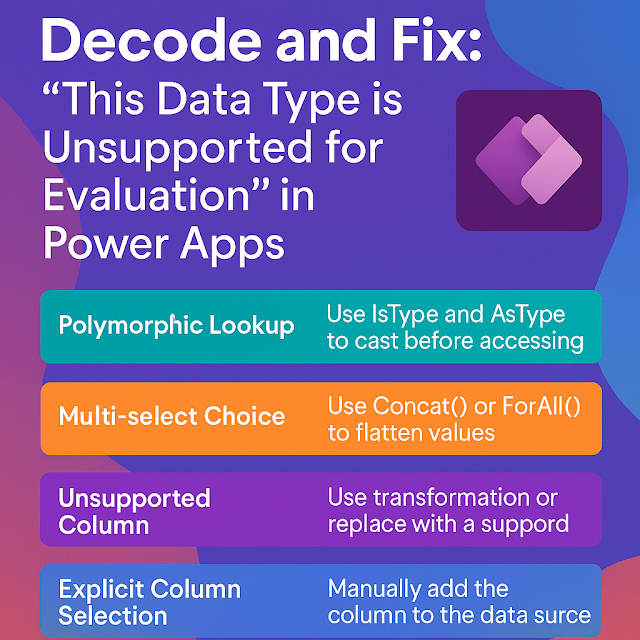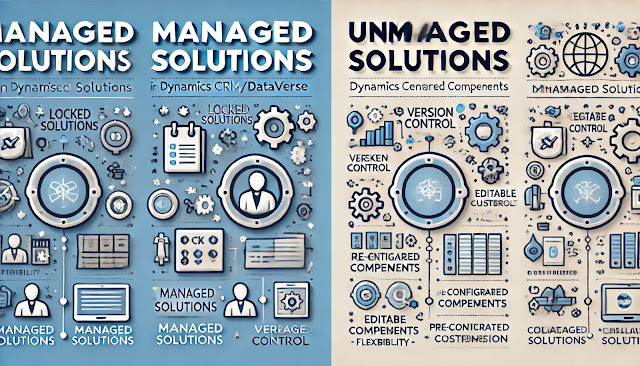Dynamics 365 Field Service : Use Power Automate cloud flows to automate tasks and enhance Field Service
The field service landscape is evolving fast. Customers demand quicker responses, technicians need seamless access to information, and businesses require systems that "just work."
Enter Microsoft Power Automate Cloud Flows — the key to unlocking automation superpowers in Dynamics 365 Field Service.
This blog will break down:
- Why Power Automate is essential for Field Service
- Real-world use cases
- Developer and architect perspectives
- Diagrams for better understanding
What Is Power Automate Cloud Flow?
Power Automate (part of the Power Platform) enables you to automate repetitive tasks and integrate systems without writing extensive code.
In Cloud Flows, you can connect Dynamics 365 Field Service to:
- Office 365 (Outlook, Teams)
- External APIs (Twilio, SAP, etc.)
- Dataverse and other Power Platform components
Think of it as the automation glue between systems.
Why Combine Power Automate With Field Service?
Field Service provides core capabilities like:
- Work Order Management
- Scheduling & Dispatch
- Asset Management
But for real-world efficiency, you often need:
- Automatic notifications (technician assigned, work order created)
- SLA monitoring and escalation workflows
- Integration with external inventory or ERP systems
- Customer reminders and post-job follow-ups
This is where Power Automate shines.
5 Real-World Use Cases
1. Automatic Technician Notifications
Scenario:
When a new work order is created, notify the assigned technician by email or SMS.
How It Works:
- Trigger: Dataverse - "When a row is added" (Work Order entity)
- Action: Send email via Outlook connector or SMS via Twilio
Outcome: The technician gets real-time updates about their jobs.
2. Customer Appointment Reminders
Scenario:
Send reminders to customers 24 hours before their scheduled appointment.
How It Works:
- Trigger: Scheduled recurrence (daily)
- Action: Query open work orders with upcoming scheduled dates
- Action: Send SMS/email reminders
Outcome: Reduced no-shows, happier customers.
SLA Escalation Alerts
Scenario:
Alert a supervisor if a high-priority work order is not resolved within SLA.
How It Works:
- Trigger: Dataverse - "When a row is modified" (Work Order status)
- Action: Post message in Teams, create Planner task for escalation
Outcome: SLA compliance improved with proactive alerts.
Inventory Sync with ERP
Scenario:
Update ERP inventory levels when a technician uses parts from stock.
How It Works:
- Trigger: Work order product marked as “used”
- Action: Call ERP API via HTTP action
Outcome: Always up-to-date stock levels.
5. Auto-Generate and Email Service Reports
Scenario:
After closing a work order, email the customer a PDF service report.
How It Works:
- Trigger: Work Order status changes to "Closed-Completed"
- Action: Generate PDF using Word Template + send via Outlook
Outcome: Professional communication and improved transparency.
Diagram: Power Automate + Field Service Workflow
Developer POV: Going Beyond Low-Code
Use Custom APIs for complex operations instead of only out-of-the-box connectors.
- Implement pre/post operation triggers for real-time updates.
- Chain multiple flows together for orchestration.
- Apply error handling and retries for robust automation.
Architect POV: Designing for Scale
- Design modular, reusable flows for multiple environments.
- Use Connection References in solutions to manage credentials securely.
- Package flows in Managed Solutions for consistent deployment.
- Leverage Environment Telemetry to monitor flow performance and reliability.
- Combine Cloud Flows with Azure Logic Apps when orchestration is too complex.
Benefits of Power Automate for Field Service
Limitations to Watch Out For
Pro Tip: ALM for Flows
Integrate flows into your Application Lifecycle Management (ALM) pipeline:
- Dev → Test → Prod deployment
- Source control with SolutionPackager
- Use Managed Properties for ISV solutions
Final Thoughts
Power Automate Cloud Flows + Dynamics 365 Field Service = A powerhouse for modern field operations. From customer reminders to inventory sync and SLA management, these automations enhance efficiency at every level.
Whether you're a developer building complex integrations or an architect designing enterprise solutions, mastering Power Automate is key.















Comments
Post a Comment